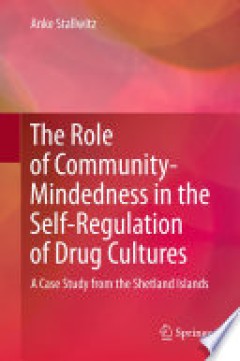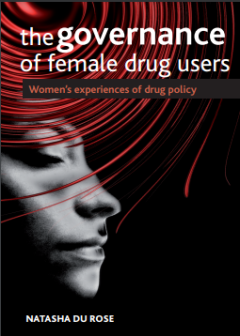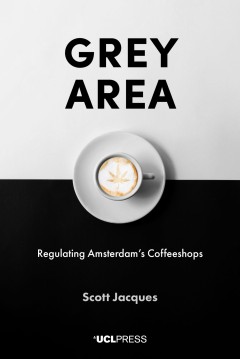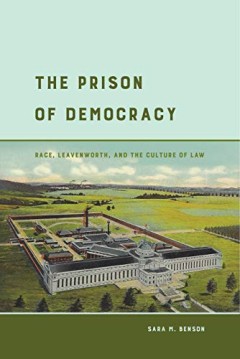Filter by

The Role of Community-Mindedness in the Self-Regulation of Drug Cultures : a …
This book analyzes heroin users and the drug subculture on the Shetland Islands, an area known for its geographical remoteness, rural character and relative wealth. It fills the scientific gap created by the conventional research in heroin research, which is usually conducted in urban areas and relies on treatment and prison populations. Based on qualitative, in-depth interviews with twenty-fou…
- Edition
- -
- ISBN/ISSN
- 9789400738614
- Collation
- 379p
- Series Title
- -
- Call Number
- 362.293 STA

Human Rights in Child Protection: Implications for Professional Practice and …
This open access book critically explores what child protection policy and professional practice would mean if practice was grounded in human rights standards. This book inspires a new direction in child protection research – one that critically assesses child protection policy and professional practice with regard to human rights in general, and the rights of the child in particular. Each ch…
- Edition
- -
- ISBN/ISSN
- 9783319948003
- Collation
- -
- Series Title
- -
- Call Number
- -

The governance of female drug users
This book is about the ways in which the governance of illicit drug use shapes female users’ lives. It examines how women drug users’ subjectivities, and hence their experiences, are shaped and regulated by drug policies. The construction of female users’ subjectivities in policy discourse and the impact the characteristics ascribed to them has on these women’s experiences are expl…
- Edition
- -
- ISBN/ISSN
- 9781447354727
- Collation
- 358p, iv
- Series Title
- -
- Call Number
- 362.29092 ROS t

Jeremy Bentham on police : the unknown story and what it means for criminology
Jeremy Bentham’s ideas on punishment are famous. Every criminology student learns about Bentham, and every criminologist contends with him, as advocate or opponent. This discourse concerns his ideas about punishment, namely with respect to legislation and the panopticon. Yet, scholars and students are generally ignorant of Bentham’s ideas on police. Hitherto, these ideas have been largely u…
- Edition
- -
- ISBN/ISSN
- 9781787356177
- Collation
- xv, 259 p.
- Series Title
- -
- Call Number
- 192 JER S

The Case for Case Studies : Methods and Applications in International Develop…
This book seeks to narrow two gaps: first, between the widespread use of case studies and their frequently 'loose' methodological moorings; and second, between the scholarly community advancing methodological frontiers in case study research and the users of case studies in development policy and practice. It draws on the contributors' collective experience at this nexus, but the underlying iss…
- Edition
- -
- ISBN/ISSN
- 9781108688253
- Collation
- xiii, 330 p
- Series Title
- -
- Call Number
- 300.72 CAS J

Migrant Hospitalities in the Mediterranean: : Encounters with Alterity in Bir…
This open access book applies insights from the anthropology of hospitality to illuminate ethnographic accounts of migrant reception in various parts of the Mediterranean. The contributors ground the idea and practice of hospitality in concrete ethnographic settings and challenge how the casual usage of Derridean or Kantian notions of hospitality can blur the boundaries between social scales an…
- Edition
- -
- ISBN/ISSN
- 9783030565855
- Collation
- xii, 132 p.
- Series Title
- -
- Call Number
- 304.8 MIG V

Grey Area : Regulating Amsterdam’s Coffeeshops
Coffeeshops are the most famous example of Dutch tolerance. But in fact, these cannabis distributors are highly regulated. Coffeeshops are permitted to break the law, but not the rules. On the premises, there cannot be minors, hard drugs or more than 500 grams. Nor can a coffeeshop advertise, cause nuisance or sell over five grams to a person in a day. These rules are enforced by surprise polic…
- Edition
- -
- ISBN/ISSN
- 9781787355910
- Collation
- xix, 186 p.
- Series Title
- -
- Call Number
- 362.29509492352 GRE S

Harnessing the Power of the Criminal Corpse
This open access book is the culmination of many years of research on what happened to the bodies of executed criminals in the past. Focusing on the eighteenth and nineteenth centuries, it looks at the consequences of the 1752 Murder Act. These criminal bodies had a crucial role in the history of medicine, and the history of crime, and great symbolic resonance in literature and popular culture.…
- Edition
- -
- ISBN/ISSN
- 9783319779089
- Collation
- x, 273 p.
- Series Title
- -
- Call Number
- 941

Representing Mass Violence : Conflicting Responses to Human Rights Violations…
How do interventions by the UN Security Council and the International Criminal Court influence representations of mass violence? What images arise instead from the humanitarianism and diplomacy fields? How are these competing perspectives communicated to the public via mass media? Zooming in on the case of Darfur, Joachim J. Savelsberg analyzes more than three thousand news reports and opinion …
- Edition
- -
- ISBN/ISSN
- 9780520963085
- Collation
- xix, 341 p.
- Series Title
- -
- Call Number
- 962.4043

The Prison of Democracy : Race, Leavenworth, and the Culture of Law
Built in the 1890s at the center of the nation, Leavenworth Federal Penitentiary was designed specifically to be a replica of the US Capitol Building. But why? The Prison of Democracy explains the political significance of a prison built to mimic one of America’s monuments to democracy. Locating Leavenworth in memory, history, and law, the prison geographically sits at the borders of Indian T…
- Edition
- -
- ISBN/ISSN
- 9780520969490
- Collation
- vii, 203 p.
- Series Title
- -
- Call Number
- 365.978138 PRI S
 Computer Science, Information & General Works
Computer Science, Information & General Works  Philosophy & Psychology
Philosophy & Psychology  Religion
Religion  Social Sciences
Social Sciences  Language
Language  Pure Science
Pure Science  Applied Sciences
Applied Sciences  Art & Recreation
Art & Recreation  Literature
Literature  History & Geography
History & Geography